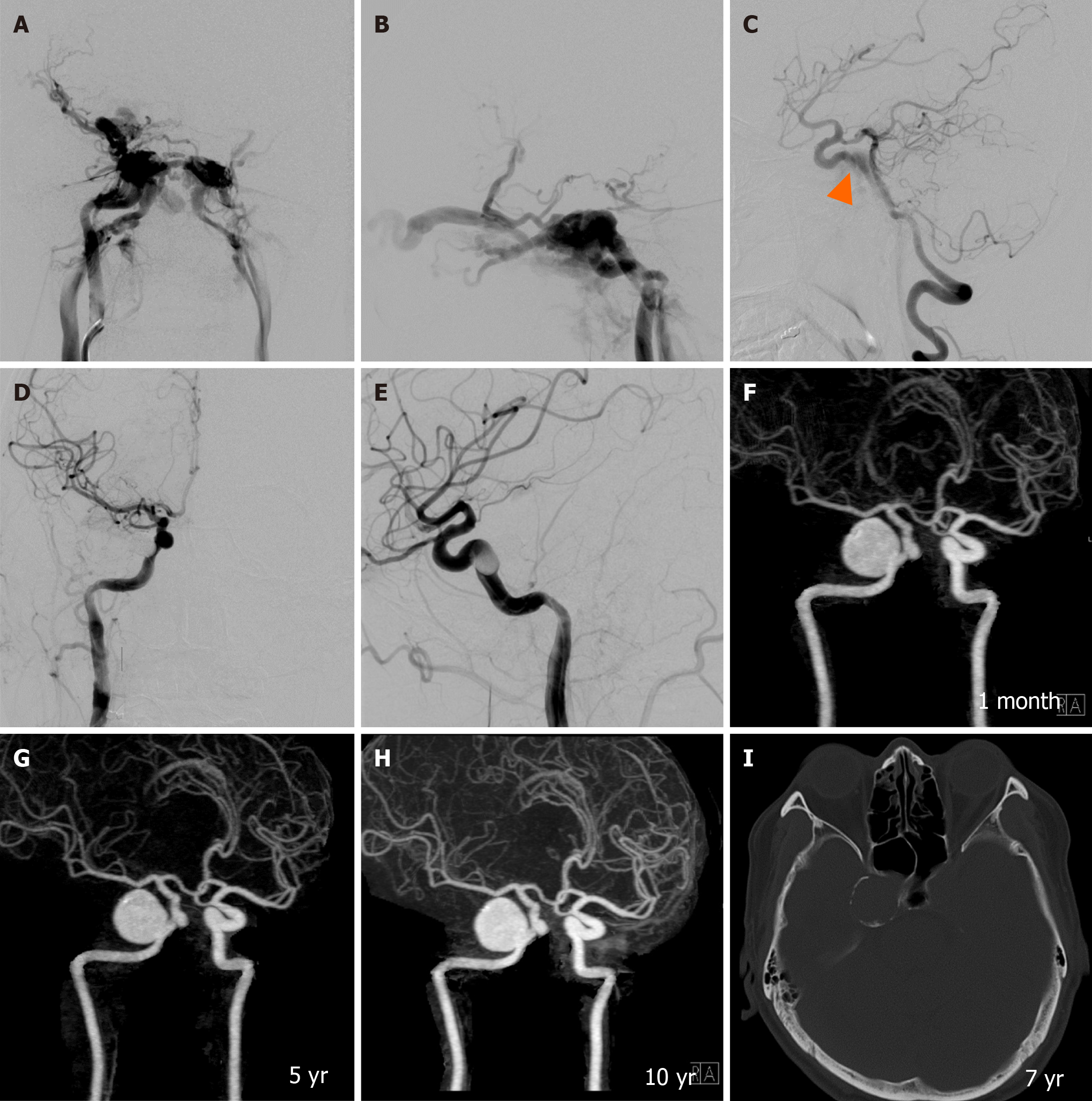Copyright
©The Author(s) 2024.
World J Radiol. Apr 28, 2024; 16(4): 94-108
Published online Apr 28, 2024. doi: 10.4329/wjr.v16.i4.94
Published online Apr 28, 2024. doi: 10.4329/wjr.v16.i4.94
Figure 7 A 30-year-old male presented with right proptosis and red eye 1 d following a motor vehicle accident.
A and B: Anteroposterior (AP) and lateral views of the right internal carotid artery (RICA) injection showed large traumatic carotid-cavernous fistula without antegrade flow into the anterior and middle cerebral arteries; C: Lateral view of the right vertebral artery with compression of the cervical carotid artery demonstrated the fistula (arrowhead) at the C5 cavernous segment of the RICA; D and E: AP and lateral views of the RICA confirmed complete obliteration of the fistula after the detachment of the balloon; F-H: Oblique views of three-dimensional reconstructed images of both ICAs using computed tomography angiography (CTA) at 1 month (F), 5 years (G), and 10 years (H) on the same projection revealed a large pseudoaneurysm (grade 3) measuring 20 mm × 20 mm × 23 mm in size; I: Axial view of bone-window ICA scan obtained 7 years after balloon embolization showed peripheral rim calcification around the aneurysmal wall.
- Citation: Iampreechakul P, Wangtanaphat K, Chuntaroj S, Wattanasen Y, Hangsapruek S, Lertbutsayanukul P, Puthkhao P, Siriwimonmas S. Pseudoaneurysm formation following transarterial embolization of traumatic carotid-cavernous fistula with detachable balloon: An institutional cohort long-term study. World J Radiol 2024; 16(4): 94-108
- URL: https://www.wjgnet.com/1949-8470/full/v16/i4/94.htm
- DOI: https://dx.doi.org/10.4329/wjr.v16.i4.94









